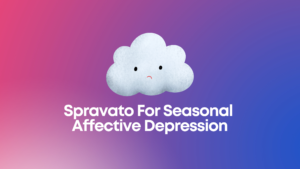One of the biggest discrepancies between clinical trials and real-life TMS patients is the inclusion criteria. Most TMS studies exclude patients with conditions such as Generalized Anxiety Disorder (GAD), bipolar depression and many other. This is actually the opposite of what happens in real clinical settings. If I were to identify how many of my patients have major depressive disorder without any other psychiatric conditions, my search would yield less than a dozen patients. Moreover, GAD is the most common co-occurring condition in my treatment population. So, by definition, most of my candidates for TMS therapy will have GAD or other psychiatric conditions in addition to depression. Hence, with such high prevalence of anxiety in our TMS population, we have implemented several strategies to manage their anxiety symptoms. One of the most successful approaches is by using cranial electrotherapy stimulation (CES) daily.
CES is a non-invasive micro-current therapy. CES devices transmit low frequency microcurrent to the head via electrodes placed on the earlobes. While the mechanism of action for this procedure is unknown, based on EEG studies CES produces an increase in alpha waves and a simultaneous decrease in beta and delta waves. According to some theories, diminished Alpha waves are correlated to depression, anxiety and insomnia. I mainly use Alpha Stim, as this particular device has over 100 independent published studies and has been used for over 20 years. Alpha Stim uses a proprietary waveform designed to increase alpha waves. This device is prescribed for anxiety, depression, insomnia and pain. Therefore, naturally conventional wisdom may question if using TMS and Alpha Stim together may overwhelm the brain. However, these treatments have a different mechanism of action and using Alpha Stim on the same day as one’s TMS session is no different than taking an anti-anxiety medication concomitant with TMS.
It is not uncommon for patients to report improvement in depression while their anxiety simultaneously appears to worsen. This is a good reason to introduce Alpha Stim and initiate a trial. Although in one Alpha Stim study patients reported 61% less anxiety immediately after using Alpha Stim, one needs to be mindful that it takes time for this treatment to work. Also, we recommend that patients space out their TMS sessions and Alpha Stim use at home. For example, if they normally get TMS in the afternoon, it may be a good idea to use Alpha Stim in the morning. Because we are introducing a new modality that effects brain waves, the motor threshold needs to be re-determined for TMS. One strategy that seems to be helpful is using Alpha Stim multiple times during a day when the patient feels extremely anxious. Anecdotally, we have seen many cases where Alpha Stim works synergistically with TMS. CES is a great maintenance therapy post-TMS and may help keep depression symptoms under control long-term. Of course, this combo therapy is no holy grail, and in some cases other approaches such as increasing the dose of an anti-anxiety medication need to be considered. The best testimony to CES is seeing how this therapy can stop a panic attack, which is extraordinary. Last but not least, Alpha Stim can also help with insomnia, which is very common with our TMS patients. Because this device can be used in one’s home settings, it is a great tool that can be easily used daily.


